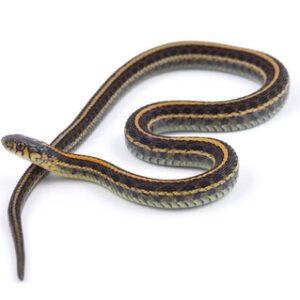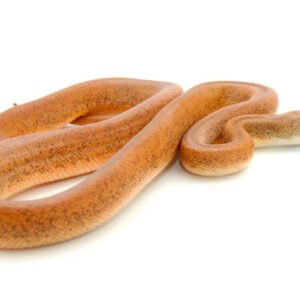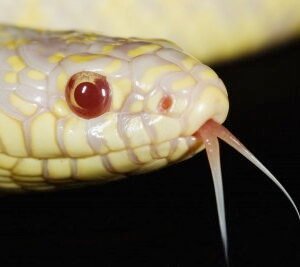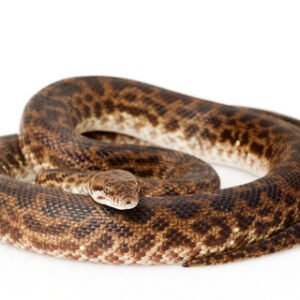Introduction to the Red-Tailed Green Rat Snake
The Red-Tailed Green Rat Snake, scientifically known as Gonyosoma oxycephalum, is a striking species within the Colubridae family. This particular snake is characterized by its vibrant green hue and a distinctive reddish or orange tail, which adds to its visual appeal and aids in identification. Native to regions in Southeast Asia, especially in countries like Thailand, Malaysia, and Indonesia, these snakes thrive predominantly in forested habitats. Their ability to adapt to both primary and secondary forests illustrates their resilience and versatility as a species.
Measuring between 1.5 to 2 meters in length, the Red-Tailed Green Rat Snake exhibits a slender body that is well-suited for arboreal life. The smooth scales on their body help them glide effortlessly among branches, while their prehensile tails provide additional support when climbing. The vibrant coloration not only serves an aesthetic purpose but also plays a vital role in camouflage, allowing them to blend seamlessly into the leaves and foliage. This adaptation is crucial for evading predators and ambushing prey.
In terms of dietary habits, the Red-Tailed Green Rat Snake is primarily a constrictor and preys on small mammals, birds, and occasionally reptiles. Its hunting strategy involves stealth and patience, as it often remains motionless until an unsuspecting target approaches. In their natural habitat, these snakes exhibit behavior typical of arboreal species, such as basking in sunlight and utilizing trees for hunting and shelter. Understanding the physical characteristics and natural behaviors of the Red-Tailed Green Rat Snake provides valuable insight into its ecological significance and the role it plays within its environment. This captivating creature inspires further exploration into the complexities of its life cycle and conservation status, highlighting the need for continued study and preservation efforts.
Care, Habitat, and Conservation of the Red-Tailed Green Rat Snake
The Red-Tailed Green Rat Snake (Gonyosoma oxycephalum) is a striking species that requires specific care when kept in captivity. To ensure their well-being, the enclosure must replicate their natural habitat, which is predominantly found in forests and jungles. A spacious terrarium, ideally at least four feet long, is necessary to allow for proper movement and exercise. The interior should be furnished with items such as branches, foliage, and hides to provide a sense of security while mimicking their arboreal lifestyle.
The ideal temperature range for these snakes is between 75°F and 85°F (24°C to 29°C) during the day, with a slight drop at night. Providing a thermal gradient is essential, allowing the snake to thermoregulate. Humidity levels should be maintained between 50% and 70%, depending on the conditions they are acclimated to, utilizing substrates such as coconut fiber or sphagnum moss to retain moisture effectively. Regular misting can further help maintain the necessary humidity levels.
Dietary needs are crucial for the Red-Tailed Green Rat Snake’s health. In the wild, they primarily feed on rodents and smaller birds; therefore, a varied diet of appropriately sized rodents is suggested in captivity. Supplementation with vitamins and minerals can be beneficial, particularly for younger snakes undergoing growth. It is essential to monitor their feeding habits and adjust portions according to their growth and health status.
Conservation efforts for the Red-Tailed Green Rat Snake involve safeguarding their habitats from deforestation and urban development. These snakes are classified as a species of least concern; however, habitat loss poses potential risks to their populations. It is vital to support initiatives that raise awareness of biodiversity and species conservation, encouraging responsible pet ownership while emphasizing the significance of preserving their natural ecosystems.





